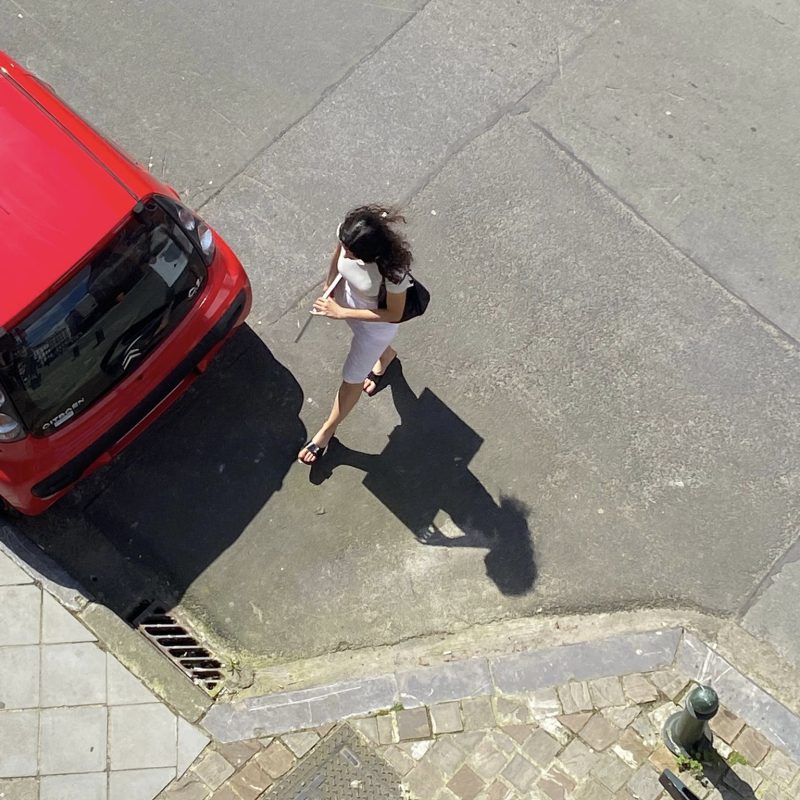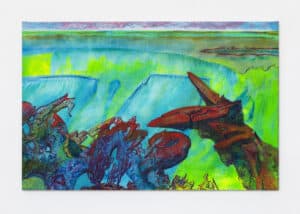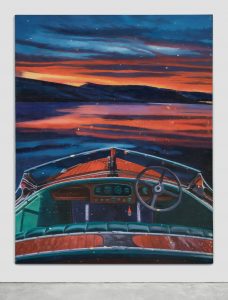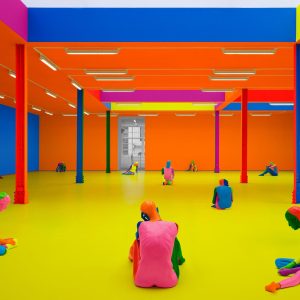Pedestrian Profanities, at Simon Lee Gallery’s New York space, presents an eclectic array of multi-media designs by eight interdisciplinary artists: Susan Cianciolo, Abigail Deville, Samuel Hindolo, Andy Robert, Cinzia Rugger, Section 8, Torey Thornton and Kandis Williams.
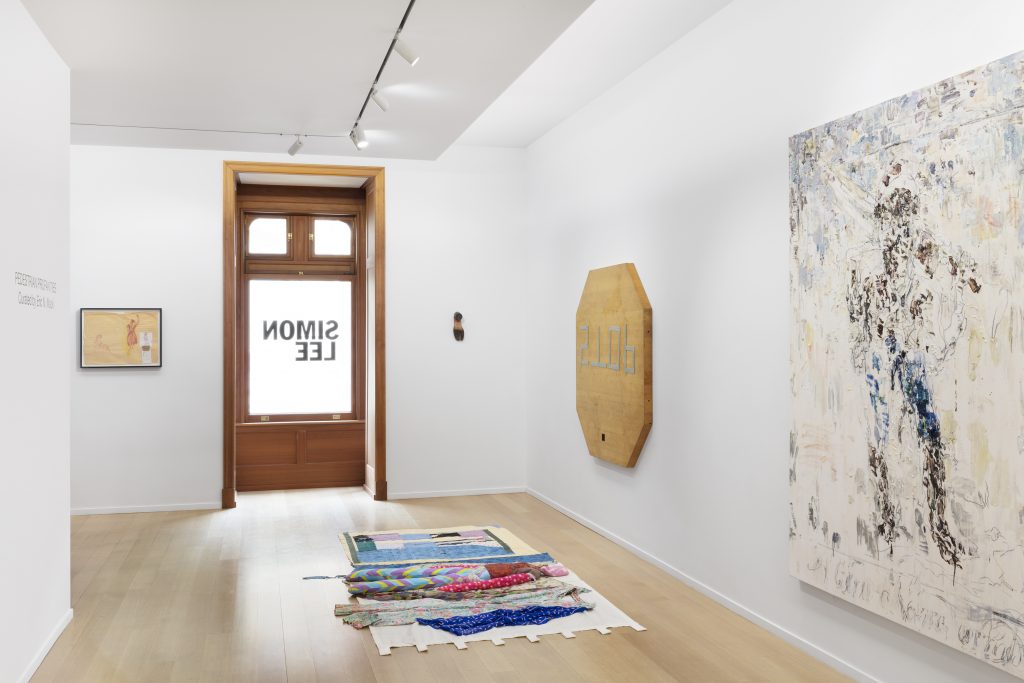
The artists in conjunction with artist and curator Eric N. Mack, worked to showcase a mix of fine art, design, and fashion. The precise positioning of each piece asks the works to physically, directly confront one another. Thus, the exhibition not only serves as a meditation on the blurring of the various conflicting disciplines that can (or cannot) define artistic form but also as a thoughtfully curated conversation between diverse representations of creation. The viewer is granted access to exist in this same space, brilliantly shifting to an analysis of their own participation into focus.
Both as an artist (in his own work) and a curator, Mack focuses on the rigid lines that exist between various art forms—Why do they exist? Who created them? Who maintains them? If one “consumes,” an object or design by window shopping, are they then to blame for keeping these constructs? What about a successful businessman man who knows nothing about art, but uses a trusted, (not to mention expensive) advisor to build an impressive, and of course investment centered, collection? His wife, children, friends, colleagues and whoever else walks through his house are implicit too, as they can’t help but engulf a unique Hockney painting. The person’s role in all of this is essential, too. Mack is fascinated by the body and how it moulds or changes to wear, carry, buy, look at, eat (?) various forms of expression. And furthermore, what sort of body is deemed worthy of “wearing art” and what does this look like? This exhibition facilitates an environment in which the artistic object (whatever it may be) has to work directly with its’ audience and vice versa.
American artist, Torey Thorton’s piece, Resting Halt (Naked) 2019, was the first to catch my attention. I was intrigued by it while doing some pre-reading on the show and then it happened to be the first thing I saw as the elevator door opened.
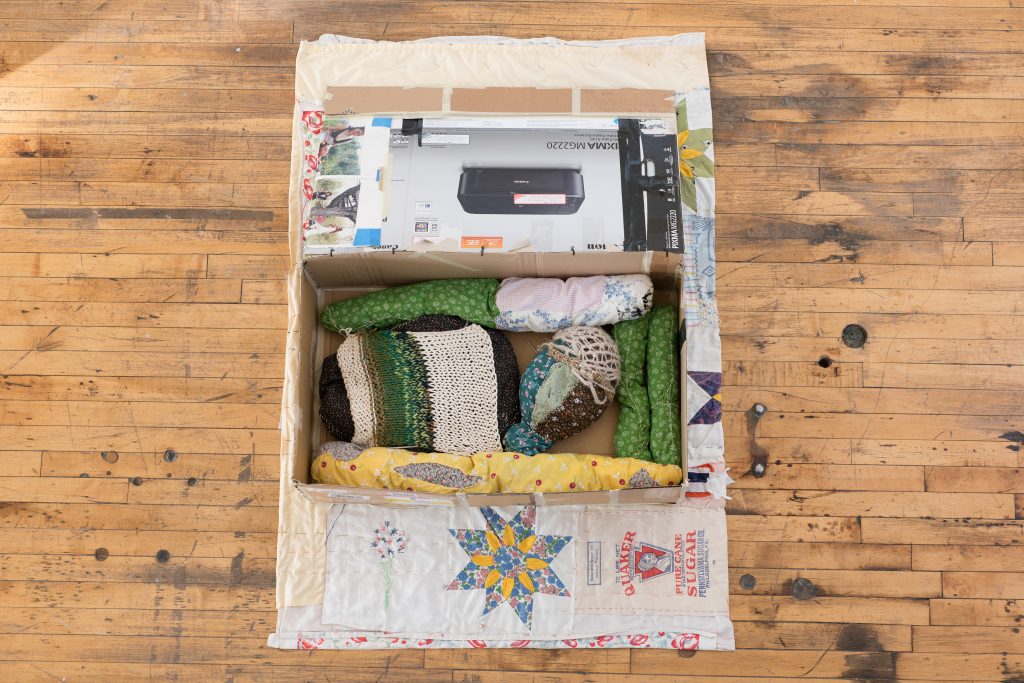
26.7 x 137.2 x 94 cm (10 1/2 x 54 1/8 x 37 1/8 in.) Microsoft Word – Pedestrian Profanities_Press
Courtesy of the artist and Bridget Donahue, New York Copyright Susan Cianciolo
I approached the piece, aiming to get a closer look, but suddenly American artist Susan Cianciolo’s, work, interrupted my path. Sunburst Kit / Doll In Part, 2004-2015, textile, quilt-like structure had been placed on the floor, almost directly in line with the centre point of Thorton’s piece, mounted on the wall above. The Brooklyn based artist and fashion designer is known for her mixed media works, especially textural collages like this one; and for a good reason. The artist is also celebrated, (now more than ever,) for her use of recycled materials in general. Ciancolo’s love of craftwork using second hand fabrics and recycled materials, however, began long before sustainable fashion was a new hot trend.
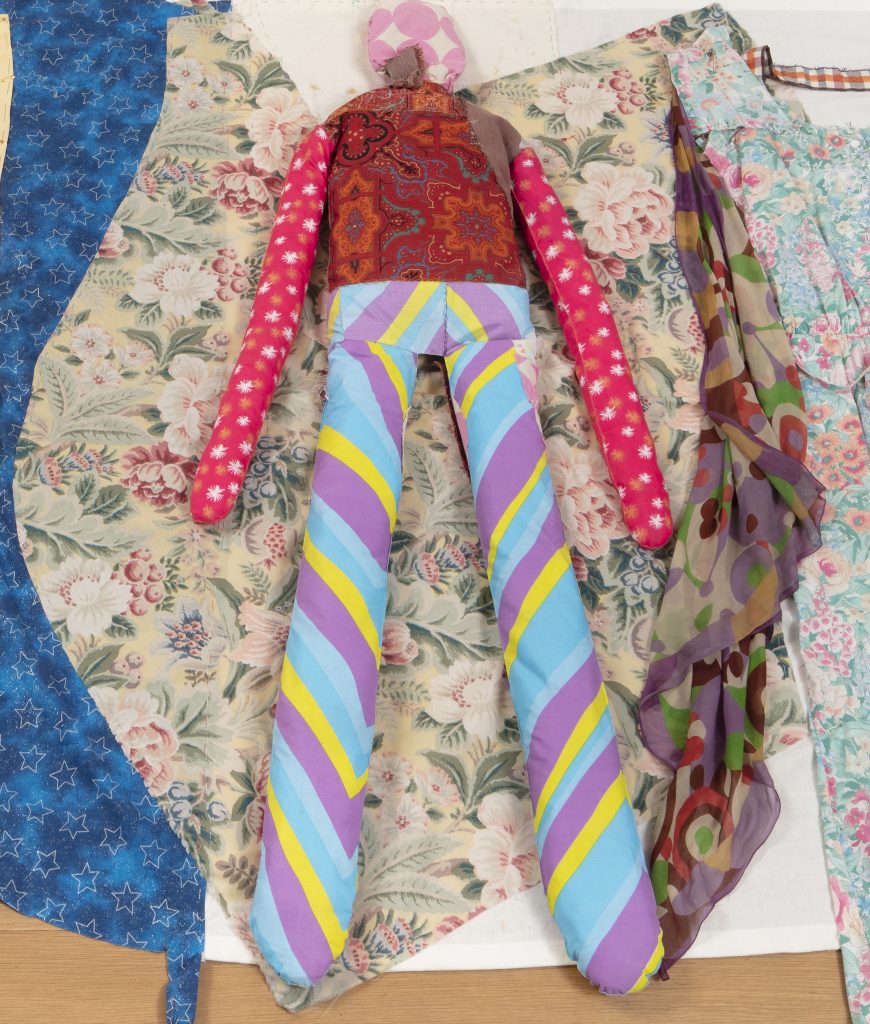
Susan Cianciolo heaven, otherworld, nirvana, 2016-2020 Detail Patchwork cloth doll, quilted tapestry, cotton, silk, thread, safety pins 6.4 x 302.3 x 166.4 cm (2 1/2 x 119 1/8 x 65 1/2 in.)
Courtesy of the artist and Bridget Donahue, New York Copyright Susan Cianciolo
Carefully stepping around the piece, I walked to the other end to examine the colourfully outfitted raw assemblage of fabric comprised the work Sunburst Kit / Doll In Part, 2004-2015was comprised of cotton doll parts, knit batten, crochet hat from 2004 wedding collection, cardboard, watercolour on paper, magazine tear sheets, tape, digital prints, collage from ‘Angels Do Exist’ and Purple Magazine photos on a quilt. The colours were vibrant and commanding and the craftwork fascinating, but a bit hard to see standing up, the work, especially the almost human-like figure was stubborn, and it wasn’t going to let me read it standing up. This is when Mack’s curatorial genius shines through because I had to make a physical and mental commitment I kneeled down to examine the detailed and textural composition. Interwoven threads connected to form beautiful, traditional patterns. Contrasted with patches of the same (sort of) purples, greys and blues. The placement of the work is wonderfully halting—Viewers are asked to bend down, sit down, take a picture of, walk around, get closer to, or further from, put eyeglasses on, take them off, or even revisit the piece from time to time. Consequently a fascinating, and powerful, symbiotic relationship, is formed.
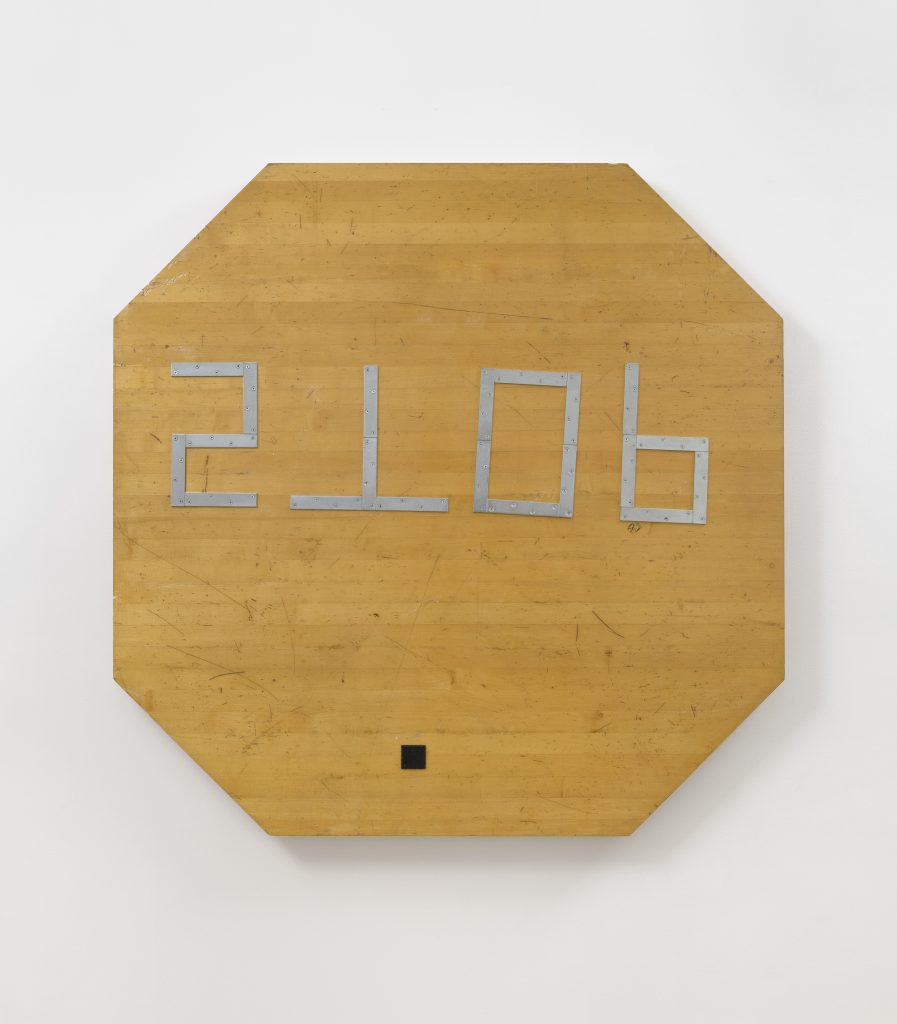
Courtesy of the artist and Essex Street / Maxwell Graham Copyright Torey Thornton
I stood up, and walked around to the left of American Painter, Torey Thorton’s 56 X 56 wooden butcher block. The design and placement of Ciancolo and Thorton’s work had essentially dictated the way in which my body shifted and moved around, and sometimes through them. Similar to Ciancolo, the (also) Brooklyn based mixed media painter uses real materials and objects as his backdrop, vehemently rejecting the confines of the canvas. I stood to the side of the work, and noticed that from that angle the wood is glossy. I liked the edge that came with the smooth material. The traditional surface was interestingly juxtaposed with minimalist, and crude, steel letters. At first, the work registers as a traditional street sign. But that distorted creation quickly shatters; we are thrown off by the seemingly haphazard letter arrangement. Thorton’s work disrupts our thinking, similar to the ways in which other works interrupted our movement. Disruption, in fact, defines this exhibition. Our world has no time, and no space, for antiquated standards of beauty that have characterised forms fashion, art, film, design, music etc. for decades. The constructs that create, and maintain, said standards, must be torn down too. The diverse and unique works that comprise Pedestrian Profanities make the exhibition essential, now more than ever
Though the works were vastly different Mack’s brilliance is characterized by a passionate interference with the norm. He urges the audience to envision themselves stepping into, carrying, touching, lying next to (figuratively not literally!), etc. each piece. Macks curatorial and creative triumph also lies in his collection of different artists and designers. Though each of their practices manifested itself in varying ways, there was a cohesive and binding interest in redefining methods of artistic expression.
It was especially inspiring to see such a varied group of artworks not only coexist but further complement each other—irrespective of size, colour, medium, theme, etc. they each held an equal power. The exhibition opened in October, and like many galleries, Simon Lee asks that you make an appointment to visit. But, I can assure you, it is worth your while. There is an impressive virtual 3-D tour of the exhibition, a viewing room of sorts. It is interesting and almost disorientating in the right way, so I would highly recommend it. BUT… if you can, I urge you to give the show the attention it requires, and deserves, in person. Because physically standing as one, with the collection, changes the game. My opinion remains that any exhibition is better in person. This show specifically, though, demands the presence of human bodies to move through and “consume” (or attempt not to) each complex and dynamic work. On until 12th, December—don’t miss it! simonleegallery.com
